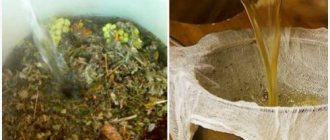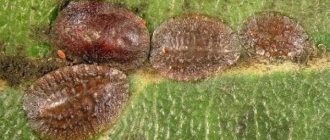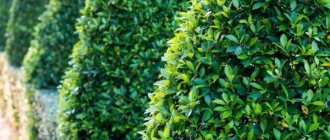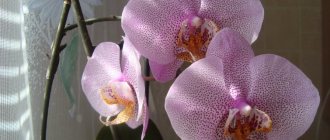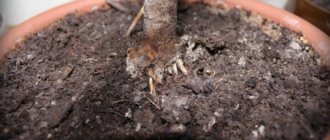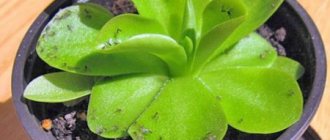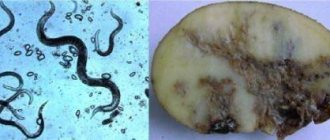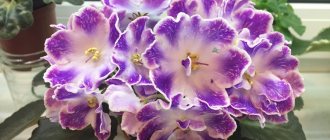Plants must obtain nutrients from the soil, as well as through photosynthesis - every schoolchild knows about this. However, some plants decided to go their own way and obtain nutrients from the very creatures that should be responsible for their pollination - from insects. Plants - predators really exist in nature, and some of them are able to cope not only with small midges, but even with a frog or a small rodent. They use different hunting strategies, both passive and active options.
To be convinced of the amazing capabilities of some plants, just look at them in detail.
Why did plants switch to animal food?
A plant that eats insects has evolutionarily changed its diet not because of a good life. All species of these carnivores grow on soils lacking nitrogen and other useful substances. It is very difficult for them to survive on sandy soils or peat, so some species have adapted to life thanks to the ability to digest animal protein. It is animal food that can completely renew reserves of nitrogen and minerals.
Plants use various traps to catch prey. In addition, all plant predators are distinguished by their bright colors and attractive smell, which insects associate with nectar-bearing flowers. But do not forget that animal food is only “vitamins” for plants, and the main nutrition for them is photosynthesis.
Cunning Traps
In the 19th century, green predators attracted the attention of Charles Darwin. He spent 15 years studying in detail and conducting various experiments with these plants. The result of his work was the book “Insectivorous Plants.”
How did it happen that plants, creatures from which such behavior would be the last thing to be expected, learned to eat?
This ability was developed in them in the process of evolution, in response to unfavorable living conditions.
They all have one thing in common - they are forced to grow in marshy soils that are extremely poor in nutrients. It is extremely difficult to survive in such conditions, but these species did it. Their leaves have turned into ingenious traps that lure “game” by smell, sweet nectar or bright color. Trap leaves vary greatly in shape and method of catching prey, but the result is almost always the same - a frivolous prey that sits down to feast on nectar on a “flower” becomes dinner itself.
Round-leaved sundew (Drosera rotundifolia)
So, sundews (Drosera)
catch small insects using sticky baits.
Tropical beauties Nepenthes
grow jugs filled with digestive juices. Outwardly, they resemble bright exotic flowers, and in some species they can reach a length of 50 cm and hold up to 2 liters of liquid. Such a “flower” is capable of digesting not only insects, but even small animals that accidentally get inside.
Nepenthes
Varieties of carnivorous plants
To date, scientists have described about 500 species of carnivorous plants that belong to 19 families. We can conclude that the evolutionary development of these groups of organisms occurred in parallel and independently.
The most famous plants that eat insects:
- sarracenia;
- genliseya;
- Darlingtonia;
- pemphigus;
- butterwort;
- sundew;
- biblis;
- Aldrovanda vesica;
- Venus flytrap.
Interesting fact: flycatchers have the Latin name muscipula, which translated into Russian does not mean “flytrap”, but “mousetrap”.
Subgroups of zonal pelargonium
Zonal pelargonium, given the numerous varieties, has its own subgroups:
- Rosaceae. A distinctive feature is that this geranium has flowers similar to roses;
- Tulip-shaped. Externally, the flowers are similar to the dense, unopened buds of tulips;
- Dianthus. Thanks to large carved petals, the flowers of plants from this subgroup resemble garden carnations;
- Star-shaped. This geranium differs not only in the shape of its petals, but also its leaves. Their sharp, angular shape has something akin to a star;
- Cactus-like. Representatives of this subgroup are quite rare. The flowers have long twisted or folded petals. Outwardly they resemble the flowering of a cactus dahlia; - “Deacons.” These are one of the smallest varieties of geraniums. Flowering, on the contrary, is abundant and lush.
Prevalence of entomophagous plants
Carnivorous plants are not only exotic representatives of the biosphere. They are found everywhere - from the equator to the Arctic. Most often you can stumble upon them in damp places, especially in swamps. Most species have been recorded in the southwestern part of Australia. Some species are eurybionts and grow in many biocenoses. The range of other species is more limited - for example, the Venus flytrap is found in nature exclusively in South and North Carolina.
What species grow in Russia
In Russia there are 13 species of carnivorous plants from 4 genera. The genus Sundew is represented by two species: common sundew and English sundew. They grow mainly in sphagnum bogs. Aldrovanda bladderwort is found both in the European part of the Russian Federation and in the Far East and the Caucasus.
The Pemphigus genus in Russia is represented by four species, the most common of which is Pemphigus vulgaris. These are aquatic plants that differ in their growth rate. They are found in shallow waters throughout Russia (with the exception of the Far North). Also in our area you can find representatives of the Zhiryanka genus, which grow in swamps, stream banks, and some on trees and mosses.
Indoor carnivorous plants - which ones to choose, how to care for and feed them
INDOOR PREDATORY PLANTS
Perhaps the most extraordinary inhabitants of window sills for those who like to surprise their guests can be indoor carnivorous plants. There is something mysterious in them, something that should not exist, that goes against the canons of nature. This is what attracts carnivorous plants - their unusualness. But if we exclude their peculiarity of feeding on living beings, we can say that indoor carnivorous plants are simply very beautiful creatures of nature, having interesting shapes of leaves and flowers. By placing them in your home, you can create a very original interior.
Recently about carnivorous plants
a lot of information appeared, which fueled great interest in them. Nowadays, growing indoor carnivorous plants is considered fashionable and prestigious. A dozen years ago, they could only be obtained in specialized greenhouses or tried to be obtained in their natural habitat. Nowadays it is not at all difficult to buy indoor carnivorous plants. They are bred by many nurseries that regularly post advertisements on the Internet. You can purchase both an adult plant and seeds. If you absolutely want to have silent predators in pots at home, making your wish come true is very simple: you need to go to a nursery or order a plant by mail.
And now the treasured flower is in your hands. What to do with it next? What conditions should be created for him so that he does not die? What should I feed him and how many times a day? What kind of care should he be given: like a plant or like an animal? There are many questions, and those who are looking for answers to them are right, because predatory indoor plants require special treatment. If you do something wrong, they will just die quietly. But if you provide them with all the conditions, they will delight you with their unique beauty for a long time, they can even bloom and give birth to “offspring.” We will share secrets on how to keep carnivorous plants in unusual home conditions.
WHAT TYPE TO BUY
First you need to make a choice.
There are about 630 species of carnivorous plants. Not everyone tolerates being kept in captivity (that is, at home in a pot). According to one data, there are only 5 species of such green predators: • Venus flytrap - Dionaea muscipula, • Cape sundew - Drosera capensis, • Sarracenia - Sarracenia, • Nepenthes (pitcher) Nepenthes - suitable for growing in hanging pots, as it forms long vine-like branches. According to other sources, the following can be additionally included as predatory indoor plants: • Some species of butterwort – Pinguicula. • Cephalotus – Cephalotus. • Darlingtonia – Darlingtonia. • Heliamphora – Heliamphora. • Single species of the Bromeliad family, for example, Brocchinia reducta. (This family includes the well-known PINEAPPLE
, which is not a predator!). True, broquinia does not produce digestive enzymes like other carnivorous plants, but it produces phosphatase, as a result of which it digests insects caught in the rainwater accumulated between the leaves and feeds on it. • Some authors write that even bladderwort (Utricularia) can be grown in a garden pond.
► AMORPHOPHALLUS COGNAC
When making a choice, you need to focus not only on the external image of the plant, but also on the conditions of its maintenance, which can differ significantly for different species.
LIGHT
Representatives of carnivorous flora are found on all continents, but mainly tropical species are distinguished by their decorativeness. Therefore, they need to create conditions close to the tropics. Carnivorous indoor plants do well where there is sun and moisture. That is, they need to be placed on windowsills where there is enough light.
However, direct sunlight leaves unhealed burns on the leaves, and for phytopredators this is a working hunting organ and stomach at the same time. Therefore, where these unique creatures will live, it should be very light, but they must be protected from the burning rays of the sun. If this condition is not met, predatory indoor plants will begin to wither. Green predators burned by the sun will begin to get sick, go bald (shed injured leaves) and eventually die too. The ideal option is, if the climate allows, to keep them in the fresh air (for example, in the garden), but not in the open sun, but in light, diffused partial shade.
► PHALAENOPSIS ORCHID
Without enough light in the room, some species will go into hibernation earlier (there are those in which the ground part completely dies off in winter), others will refuse to bloom. If there is a lack of natural sunlight, it must be created artificially using special lamps. Some hobbyists grow carnivorous plants in terrariums.
MOISTURE
This is the second condition that must be fulfilled so that predatory indoor plants do not die. They need quite high humidity, however, it needs to be created only during the growing season, which lasts for most species from May to the second ten days of October. It is not necessary to spray them with a spray bottle; it is enough to simply place the pot in a pan with water, which must be added as it disappears. Since the soil will take water from the pan, additional watering of the plants is not required. Only rainwater or distilled water should be poured into the pan, because predatory indoor plants cannot tolerate the minerals contained in other water and die.
POT
A house for exotic residents also needs to be chosen correctly. Many gardeners advise taking only plastic pots for them, since ceramic ones release some substances into the soil that are harmful to phytopredators. Another indispensable condition of the pot is that it must have a drainage hole (or better yet, several). Houseplants-predators die without moisture, and when there is an excess of it, they get sick with gray rot and also die. Here you need to provide a middle ground, which is why you need holes in the pots, plus a layer of drainage in the form of screenings that have undergone antimicrobial treatment or sea pebbles. Drainage material can be processed by calcining it in the oven.
PRIMING
Don’t even think about planting your exotic pet in fertile black soil. Such soil is tantamount to poison for him. Garden soil is also not suitable for him, because carnivorous plants naturally live in swamps, deserts, and where the soil is very poor. Indoor carnivorous plants should grow in the same soil. Its composition may vary slightly, but basically it is a mixture of peat, sphagnum moss, and perlite. Some people advise adding crushed coal, soil for orchids, or coconut substrate.
VEGETATIVE REPRODUCTION
Carnivorous indoor plants reproduce mainly by dividing rhizomes or cuttings. The first method is best used before the start of the growing season, so that your predator has, so to speak, the biological preconditions to develop.
It is better to carry out cuttings in early summer, when the plants have time to grow leaves of the required length so that cuttings can be cut from them. It is not advisable to take cuttings from the end of July, since the young plant (if it takes root) will not have time to strengthen its root system before the winter dormancy period.
The cut cuttings should be placed in a moist substrate (preferably perlite with coconut substrate) and covered with film, that is, to make something like a mini greenhouse. It is necessary to constantly monitor the humidity in such a structure. It should be high enough for the cutting to feel comfortable, but not high enough for gray rot to form.
REPRODUCTION BY SEEDS
Indoor carnivorous plants rarely reproduce in this way, as many gardeners consider this a very difficult matter. However, growing a phytopredator from seeds is no more difficult than other fastidious indoor plants.
The first thing necessary for seed germination is stratification. To do this, you need to prepare a solution: drop 2-3 drops of Topaz into a liter of water. Soak a napkin in it. Squeeze out excess water. Place the seeds in a damp cloth. Put everything together in a plastic bag or any plastic container and put it in the refrigerator for 1.5-2 months (not in the freezer!). During this period, you will need to regularly check the napkin and moisten it in the solution if it begins to dry out.
You can grow indoor carnivorous plants from seeds a little differently. Pour a mixture of peat and sphagnum moss treated with Topaz into a plastic pot, thoroughly moisten the mixture with water, place the seeds in it, wrap the pot in plastic and put it in the refrigerator for 2 months. During this period, you should remove the pot from time to time and check the soil for mold. If you notice that it has begun to form, you need to treat the surface with “Topaz” or its equivalent.
► VENUS'S Slipper
At the end of stratification, the seeds are removed from the napkin and sown in the prepared substrate (we wrote about it above). The pot is covered with a plastic bag and placed on a sunny windowsill. The same is done with a pot from the refrigerator. It is placed in a warm sunny place. Polyethylene is not removed. The inspection for mold continues.
It is necessary to sow the seeds on the surface of the soil, after which they are only lightly sprinkled with soil substrate. Indoor carnivorous plants take a long time to germinate. Shoots can be expected in about a month. From this moment on, you need to gradually accustom the young plants to live without film. You need to first open it slightly for a couple of hours, gradually increase this time every day, and then remove it completely.
TRANSFER
Indoor carnivorous plants grow their root mass slowly. Therefore, there is no need to change houses frequently. They need to be transplanted into a larger pot no earlier than after 2 years, and sometimes after 3.
FEEDING
Perhaps the most curious question for owners of such exotic plants is
what to feed indoor carnivorous plants
.
If they live on the street, then nothing. They will take care of themselves. If you only keep them indoors, and even in one where neither a fly will fly nor a mosquito will get into, you will have to independently obtain live food for your pets. Small cockroaches, moths, flies, mosquitoes and other small things are suitable. Be careful! Many plants, such as the Venus flytrap, require live prey. She does not react to a stationary one.
How often to feed indoor carnivorous plants?
This is also a very important question. Don't think that you need to catch dozens of flies. Phytopredators are not able to digest a lot of food. The excess begins to rot in their “stomachs,” causing “indigestion” and other problems in their gastrointestinal tract. 3 flies per month will be enough for your pets. Especially large specimens can increase their intake of live food up to 5 times a month.
Some home-grown plant breeders and entomologists conducted experiments with their phytopredators, replacing flies with drops of blood or tiny (the size of a match head) pieces of fresh meat. There are also tips on the Internet to feed insectivorous plants with fertilizers like Miracid, dripping it onto the leaves 3-4 times a month. But the most win-win and repeatedly proven method is to give your predators only live insects in pots.
CARE FEATURES
Indoor carnivorous plants are not capricious creatures and do not require much attention to themselves.
To live a happy life in your home, they need: • Light. • Humidity. • The temperature in the room throughout the growing season is +28°C - +30°C. • In winter, predators should be sent to a cool room where the ambient temperature will be within +5°C. They need to be provided with moderate soil moisture at all times at this time. • Leaf care. Each of them can dine only 3 times, after which it dies. To avoid infection of the plant with all sorts of diseases and to maintain its beautiful appearance, such leaves must be removed in time. DISEASES AND PESTS
Indoor carnivorous plants that feed on insects can become food themselves.
Spider mites like to settle on some carnivores, for example, on the leaves of pitcher plants (except for the pitchers themselves )
. If it is detected, you need to treat the phytopredator with an insecticide, trying to ensure that the substance does not enter the plant’s stomach organ.
Aphid
is also not afraid of insectivores and settles on their organs, which are not traps. This pest can be removed by hand using soapy water.
Another parasite that affects indoor carnivorous plants is scale insects. They are controlled with insecticides.
► GUZMANIA
Much worse are the diseases that affect plants when they are not properly cared for. The most common is gray rot
, the development of which requires the same conditions as for indoor carnivores. It's difficult to fight her. It is much easier to prevent the disease. To do this, you need to ensure drainage in the pot and regularly ventilate the room, moving your predator away from drafts during this time.
Affects carnivores and other fungal diseases
, characteristic of all indoor plants. Prevention in this case is to treat the soil with “Topaz” or its analogues before planting the plant and when transferring it to a larger pot.
It is especially important to monitor the quality of the soil during the reproduction of the predator by dividing the rhizome. If there are microbes in the soil, they will easily penetrate into the wounds formed on the rhizome fragments.
► THE HIGHEST GRASS
WHAT CARNIVORES DON’T LIKE
At the end of our article, we would like to draw your attention to what your favorite phyto-predators should not do. 1. Forget to moisten the soil. 2. Overfeed. 3. Stick your fingers into their traps. Some “flower growers” have fun by making their indoor predatory plants respond to a finger or other object sent into a trap instead of a fly. Such games irritate the plant and disrupt its functions, which have been formed over centuries. In the best case, the pet will shed its leaves after such experiments. At worst, he will die, losing the ability to take the food he needs.
“Website about plants” www.pro-rasteniya.ru
Return to section
| < Previous | Next > |
Types of Trap Organs
Predators catch their victims using trap organs, which, depending on the species, are of several types:
- pitcher leaves. This design has a lid and the inside is filled with water (Nepenthes, Darlingtonia);
- leaves-traps. The modified leaf consists of two valves with teeth on the edges. When the insect is inside, the valves close (Venus flytrap);
- Velcro leaves. On the leaf plates there are special hairs that secrete a sticky secretion that attracts insects (sundew, butterwort);
- suction traps. Water along with the victim is sucked under pressure into a special bubble (pemphigus);
- crab claw traps. Victims easily fall into them, but cannot get out because of the hairs growing forward in a spiral (genlisea).
Content Rules
Despite its diversity, zonal pelargonium does not require large differences in maintenance conditions. All varieties are quite unpretentious and require minimal care.
Growing this flower brings a lot of pleasure to its owner, both morally and in terms of health benefits. After all, it is believed that along with its fragrant aroma, geranium also distributes antibacterial substances and disinfects the air.
Lighting
It is ideal to grow zonal pelargonium next to windows facing west or east. The plant does not tolerate too bright and direct rays and is afraid of burns. If southern windows are chosen as the habitat, the flower must be shaded.
Air temperature
Care should be accompanied primarily by maintaining a stable temperature, since these geraniums do not tolerate sudden changes. In summer, the ideal range is from 20 to 25 degrees, in winter – about 15, the critical lower mark is plus 7.
Soil requirements
Soil requirements are similar to those of other geraniums. It should be a non-acidic soil around 6.0 pH. A good drainage layer is necessary. Additional fertilizing should be avoided, as the plant may begin to fatten and will negatively affect the flowering process. When making your own substrate, you need to make sure that there is no excess peat, which can cause moisture stagnation. Ideal proportions: equal portions of peat, humus and turf, plus half a portion of sand. Growing in such soil will be the most favorable for the flower.
Watering mode
Care regarding watering should be regular. Geraniums require abundant watering every other day in the summer months; in the winter, once a week or a week and a half will be enough.
Fertilizing
Feeding should be done from the beginning of March until the end of August with a frequency of once every 15-20 days. The main emphasis should be on phosphorus and potassium. At other times of the year, care does not need to be supplemented with fertilizing.
Transfer
It is not recommended to transplant pelargonium zonalis too often. This process negatively affects the plant and makes it weaker. He needs a lot of time and effort to recover. It is also worth remembering that this flower prefers to grow in a somewhat cramped container. This has a beneficial effect on the duration and splendor of flowering. And after an adult plant has become taller than 25 centimeters, it is no longer recommended to replant it. Replanting is necessary if the plant's rhizome has grown too much and has already appeared in the drainage hole. It is worth replanting in the spring.
Keeping at home
The following types of carnivorous plants can be kept at home:
- Venus flytrap;
- all types of sundews;
- tropical fatworts;
- sarracenia;
- dwarf nepenthes.
In Russia, the most popular indoor predator is the Venus flytrap. The flower pot should be kept on a well-lit windowsill or on a table with artificial lighting. The indoor air temperature in summer should be between 18–25 °C, and in winter – 10–13 °C. Since the flytrap is a moisture-loving plant, the soil in the pot must be constantly moistened. The plant should be watered with clean rain or melt water.
Reproduction
Flycatchers reproduce by cuttings, dividing the bush and through cross-pollination. The flowering period of Dionaea begins in late spring. In natural biocenoses, the plant is pollinated by insects. At home, flowers need to be pollinated by hand, transferring pollen from the stamens to the stigma with a soft brush.
Top dressing
If a plant is called carnivorous, this does not mean at all that it needs to be fed meat. The flycatcher itself must hunt small insects in order to fully digest food and obtain the necessary substances. Also, do not forget that Dionaea receives its main nutrition from the ground.
Care during the rest period
During the cold season, the Venus flytrap stops its growth and falls into suspended animation. At some point it may even seem to you that the plant is dying. But this is not so, dionaea needs this condition to gain strength for the next growing season. At this time, your task will be to remove withered leaves and wait for new ones to grow.
Transfer
Dionea can be replanted at any time of the year, but it is better to do it in the spring during the period of active growth. The pot should be deep and narrow, since the roots of the flower grow deep down and can reach a length of 20 cm. In small pots, the soil should be sandier so that the soil does not become waterlogged and the roots do not rot.
Choose a pot with drainage holes, and pour a small layer of fine expanded clay at the bottom.
Before transplanting, make sure that the growing medium used is slightly moist. The root system of the flytrap is quite fragile, so be careful. When transplanting, you can immediately divide the mother plant into several children and plant them in separate pots.
The best shade-loving plants
Soaking the roots in water for a few minutes before planting helps remove any old soil and promotes hydration. After the procedure, lift the leaves above the soil and wash them with a spray bottle.
Dionaea muscipula is not very picky about soil composition. Grows well in pure sphagnum moss (live or dried), mixtures of moss and peat in a ratio of 1:1, peat and coarse sand (1:1) with the addition of moss pieces.
It takes the plant 5 weeks to adapt to the new soil. Temporarily increase watering and do not place the flowerpot in bright light.
Diseases and pests
The insects that this pelargonium is afraid of are whiteflies, spider and cyclamen mites, mealybugs and aphids. These plants are also susceptible to fungal diseases such as gray rot.
If the leaves and stems take on a reddish tint, the geranium may be cold. You should also not over-moisten the soil. If this happens, and the plant’s stem turns black at the base, the pelargonium will most likely disappear.
If the plant is gaining green mass well and flowering does not occur for a long time, stop feeding the plant with fertilizers. But if the flower is rapidly stretching upward, and the green part is very poor and sparse, you need to provide the plant with more light. It is worth watering more often if the owner notices yellowing of the leaves or the appearance of brown spots on healthy leaves.
Crown formation without pruning
There are several ways to force an elastic ficus to branch laterally without radical pruning:
- The trunk is tilted as low as possible, and the top is fixed with ropes to the lower branches or to a support stick inserted into the ground. After this, the bud that turns out to be the tallest wakes up, giving rise to a new strong branch. The top of the head stops stretching upward. Gradually leveling the bent branch to its original position, you can give the opportunity to awaken several more lateral buds. It should be remembered that the younger the tree, the more responsive it is to such stimulation.
- Having disinfected the knife, make a deep (1/3 of the thickness) incision above the dormant kidney. The bark is removed from this place. The purpose of this operation is to weaken the root nutrition of the awakened bud, which is called kerbovka. This is done in early spring.
- Stimulation of branching with the help of cytokinins - artificial plant hormones. They replace the apical dominance of the apex with axillary - lateral dominance. An additional effect of these drugs is to prevent the lower leaves from falling off.
We form a crown of a non-standard type (photo)
Rubber plant gives you the opportunity to show your imagination when forming an unusual crown shape.
- The standard form with its stem and splendor is similar to a miniature tree. To create it, the central stem is tied to a peg and all leaves and twigs are removed to the required height. After some time, the support is removed, and the trunk is shortened by 3-5 cm. The lower branches are cut off by a third, and the upper ones are pinched at the 2-3rd internodes. This procedure is repeated as often as necessary to maintain the selected crown shape.
- Ficus weaving. Several young ficus plants of equal height are placed in a pot. To get a trunk in the form of a spiral, you need 2 elastics, and for a braid - 3. Weaving is done without tension, taking into account that the trunks will thicken over time. All side branches are removed.
- To get a “fence,” plants are placed in a container in a straight line at the same distance from each other. To maintain the desired shape and direction, they are fastened with twine, thick thread or film. To prevent scarring, the clamps are loosened from time to time. At the points of contact, remove the bark. The juice that appears is wiped off with a wet rag, the plants are brought together and secured with a film. The resulting composition is turned towards the light.
- To obtain a circular trellis, rubber plants are planted in a circle.
- To obtain a spiral trunk , elastica is tied to a peg, wrapping the trunk around a support as it grows. All side branches are removed.
- You can create an original composition by placing a coconut column in the center of several ficuses, constantly moistening it. The aerial roots of the plants will entwine it and grow together, forming a monolithic structure like a banyan tree.
Rubber-bearing ficus after pruning
After pruning, poisonous milky juice appears on the snake ficus. It should be completely removed with a wet cloth, as water stops the juice flow. This procedure is mandatory, because frozen juice clogs the blood vessels, stopping the growth of the plant.
If the elastica needs to be transplanted, which also promotes its branching, then this can only be done 2 weeks after pruning, since this procedure causes stress in the elastic ficus. It is usually transplanted into a pot only 2-3 centimeters larger than the previous one. For tall ficuses, replanting is replaced by updating the top soil layer.
To stimulate the growth of the rubber plant, after a month it is fed with complex mineral and organic fertilizer. The soil must be moistened before this. The resulting side shoots are pinched to achieve a dense and compact crown. Their direction can be adjusted using wire. Another tree is usually planted in a container next to the main tree, most often its rooted top. This is an additional resource for forming a beautiful plant crown.
We also suggest you read the article about the ficus “Natasha”.
